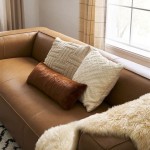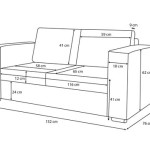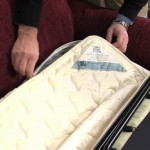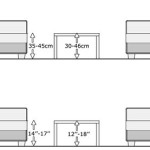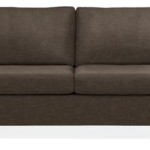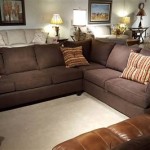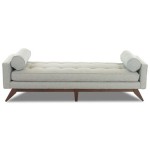Environmentally Friendly Sleeper Sofas: Combining Comfort and Sustainability
The modern consumer is increasingly conscious of the environmental impact of their purchasing decisions. This awareness extends to home furnishings, including sleeper sofas. Environmentally friendly sleeper sofas represent a growing market segment, offering a solution for those seeking both comfort and a reduced ecological footprint. These sofas incorporate sustainable materials, eco-conscious manufacturing processes, and thoughtful design to minimize their impact on the planet.
The appeal of a sleeper sofa lies in its dual functionality: offering comfortable seating during the day and transforming into a bed at night. This makes it a versatile piece of furniture, particularly valuable in smaller living spaces or for accommodating guests. However, traditional sleeper sofas often rely on materials and manufacturing techniques that can be detrimental to the environment. The rise of environmentally friendly alternatives addresses these concerns by prioritizing sustainability at every stage of the product lifecycle.
Understanding the characteristics of an environmentally friendly sleeper sofa involves examining the materials used in its construction, the manufacturing processes employed, and the overall durability and lifespan of the product. These factors collectively contribute to the sofa's environmental impact and its long-term sustainability.
Sustainable Materials: The Building Blocks of Eco-Friendly Sofas
The selection of materials is a critical aspect of creating an environmentally friendly sleeper sofa. Conventional sofas often utilize synthetic fabrics, chemically treated wood, and petroleum-based foams, all of which contribute to pollution and resource depletion. Sustainable alternatives focus on renewable resources, recycled content, and materials with minimal environmental impact.
Fabrics: Organic cotton is a popular choice for upholstery. Grown without synthetic pesticides or fertilizers, organic cotton reduces the exposure to harmful chemicals for both farmers and consumers. Linen, derived from the flax plant, is another sustainable option. It requires less water and fewer pesticides to grow compared to cotton. Recycled polyester, made from recycled plastic bottles, provides a way to repurpose waste materials and reduce the demand for virgin polyester production. Hemp, known for its durability and rapid growth, is also gaining traction as a sustainable fabric choice for upholstery.
Wood: The frame of a sleeper sofa often consists of wood. Environmentally friendly options prioritize sustainably harvested wood certified by organizations like the Forest Stewardship Council (FSC). FSC certification ensures that the wood comes from responsibly managed forests that protect biodiversity and promote sustainable forestry practices. Bamboo, a rapidly renewable resource, is also increasingly used in furniture construction. Its fast growth rate and natural strength make it a viable alternative to traditional hardwoods.
Foam: Conventional sofa cushions and mattresses often contain polyurethane foam, derived from petroleum. Environmentally friendly sleeper sofas utilize alternatives such as natural latex foam, derived from rubber trees. Natural latex is biodegradable and offers excellent support and comfort. Plant-based foams, made from renewable resources like soy or corn, are also gaining popularity. These foams reduce the reliance on fossil fuels and offer a more sustainable cushioning option. Recycled foam, made from repurposed foam scraps, provides another avenue for minimizing waste and reducing the demand for new foam production.
Fillings: Beyond foam, the fillings used in cushions and pillows also contribute to the sofa's environmental footprint. Organic cotton batting, wool, and recycled polyester fiberfill are all sustainable alternatives to traditional synthetic fillings. Wool, a natural fiber derived from sheep, is naturally flame-resistant and provides excellent insulation and comfort. Recycled polyester fiberfill, similar to recycled polyester fabric, repurposes waste materials and reduces the need for virgin polyester production.
The sourcing of these materials is equally important. Transparency in the supply chain ensures that materials are obtained ethically and sustainably. Manufacturers committed to environmentally friendly practices often provide information about the origin of their materials and their environmental certifications.
Eco-Conscious Manufacturing: Minimizing Environmental Impact
The manufacturing process plays a significant role in the environmental impact of a sleeper sofa. Environmentally conscious manufacturers adopt practices that minimize waste, reduce energy consumption, and eliminate harmful chemicals.
Waste Reduction: Efficient cutting techniques and pattern layouts minimize fabric waste during the upholstery process. Manufacturers may also utilize fabric scraps and foam remnants to create smaller items or recycled materials. Implementing closed-loop systems, where waste materials are repurposed or recycled within the manufacturing process, further reduces waste generation.
Energy Efficiency: Utilizing energy-efficient machinery and lighting reduces the carbon footprint of the manufacturing process. Manufacturers may also invest in renewable energy sources, such as solar panels, to power their facilities. Optimizing production schedules and transportation logistics can further minimize energy consumption.
Chemical-Free Finishes: Traditional furniture finishes often contain volatile organic compounds (VOCs), which can contribute to air pollution and pose health risks. Environmentally friendly manufacturers utilize water-based finishes, natural oils, or beeswax to protect and enhance the wood without releasing harmful chemicals into the environment.
Ethical Labor Practices: Beyond environmental considerations, ethical labor practices are an integral part of sustainable manufacturing. Ensuring fair wages, safe working conditions, and respect for worker rights contributes to the overall sustainability of the product.
Certifications: Several certifications can help consumers identify environmentally friendly manufactured products. These certifications assess various aspects of the manufacturing process, including resource utilization, waste management, and chemical emissions. Certifications like OEKO-TEX Standard 100, which tests for harmful substances in textiles, and GREENGUARD Gold, which certifies low chemical emissions, provide assurance of product safety and environmental performance.
Transparency in the manufacturing process is crucial. Consumers should seek out manufacturers who are willing to disclose information about their production practices and material sourcing.
Durability and Lifespan: Investing in Long-Term Sustainability
The durability and lifespan of a sleeper sofa directly impact its overall environmental footprint. A sofa that lasts longer reduces the need for frequent replacements, thereby minimizing the consumption of resources and the generation of waste. Investing in a well-made, durable sleeper sofa is a fundamental aspect of environmentally responsible purchasing.
Construction Quality: A sturdy frame, reinforced joints, and high-quality upholstery contribute to the longevity of a sleeper sofa. Look for sofas with solid wood frames, mortise-and-tenon joints, and durable fabrics that can withstand wear and tear. Careful attention to detail in the construction process ensures that the sofa will withstand regular use for years to come.
Timeless Design: Choosing a sleeper sofa with a classic and versatile design ensures that it will remain stylish and functional for years to come. Avoiding trendy designs that quickly fall out of favor reduces the likelihood of discarding the sofa prematurely. A timeless design allows the sofa to adapt to changing decor and personal preferences.
Maintenance and Care: Regular cleaning and maintenance can significantly extend the lifespan of a sleeper sofa. Following the manufacturer's instructions for cleaning and care helps to prevent damage and prolong the sofa's aesthetic appeal. Addressing minor repairs promptly can prevent them from escalating into more significant issues.
Warranty: A comprehensive warranty provides assurance of the sofa's quality and durability. A longer warranty period indicates that the manufacturer has confidence in the product's ability to withstand regular use. Examining the terms and conditions of the warranty can provide valuable insights into the manufacturer's commitment to quality.
Repairability: Consider whether the sleeper sofa is designed for easy repair and replacement of components. A sofa that can be easily repaired or have its parts replaced is more likely to be kept in use for a longer period. The availability of replacement cushions, upholstery, or mechanical parts can extend the sofa's lifespan significantly.
Ultimately, selecting an environmentally friendly sleeper sofa involves a holistic assessment of materials, manufacturing processes, and durability. By prioritizing these factors, consumers can make informed purchasing decisions that contribute to a more sustainable future.

Koala Sofa Bed 3rd Gen

5 Best Eco Friendly Sofa Beds For Greener Guest Stays 2025

5 Best Eco Friendly Sofa Beds For Greener Guest Stays 2025

Eco Sofa Natural Latex Upholstered Bed Tfs
.jpeg?strip=all)
11 Best Sleeper Sofas Sofa Beds That Are Truly Chic 2025 Architectural Digest

Koala Sofa Bed 3rd Gen

Homeestela Compression Comfortable Sleeper Sofa For Small Space

Yitahome Sofa Bed Chair Convertible Fabric Sleeper With Adjustable Backrest Pillow Side Pockets Pullout For Living Room Bedroom Small Space Green By Ufurnish Com

Organic Sofas Eco Friendly Non Toxic Sofa For The Futon

Afa 88 Convertible Sectional Sleeper Sofa Pull Out Bed With Storage Chaise For Living Room Velvet Green

